If someone asked Katherine Leung what is her work, “Following the migratory waterbirds” may probably her answer. This EAAFP flyway featuring this lady who migrates along the coast of China to study migratory waterbirds.
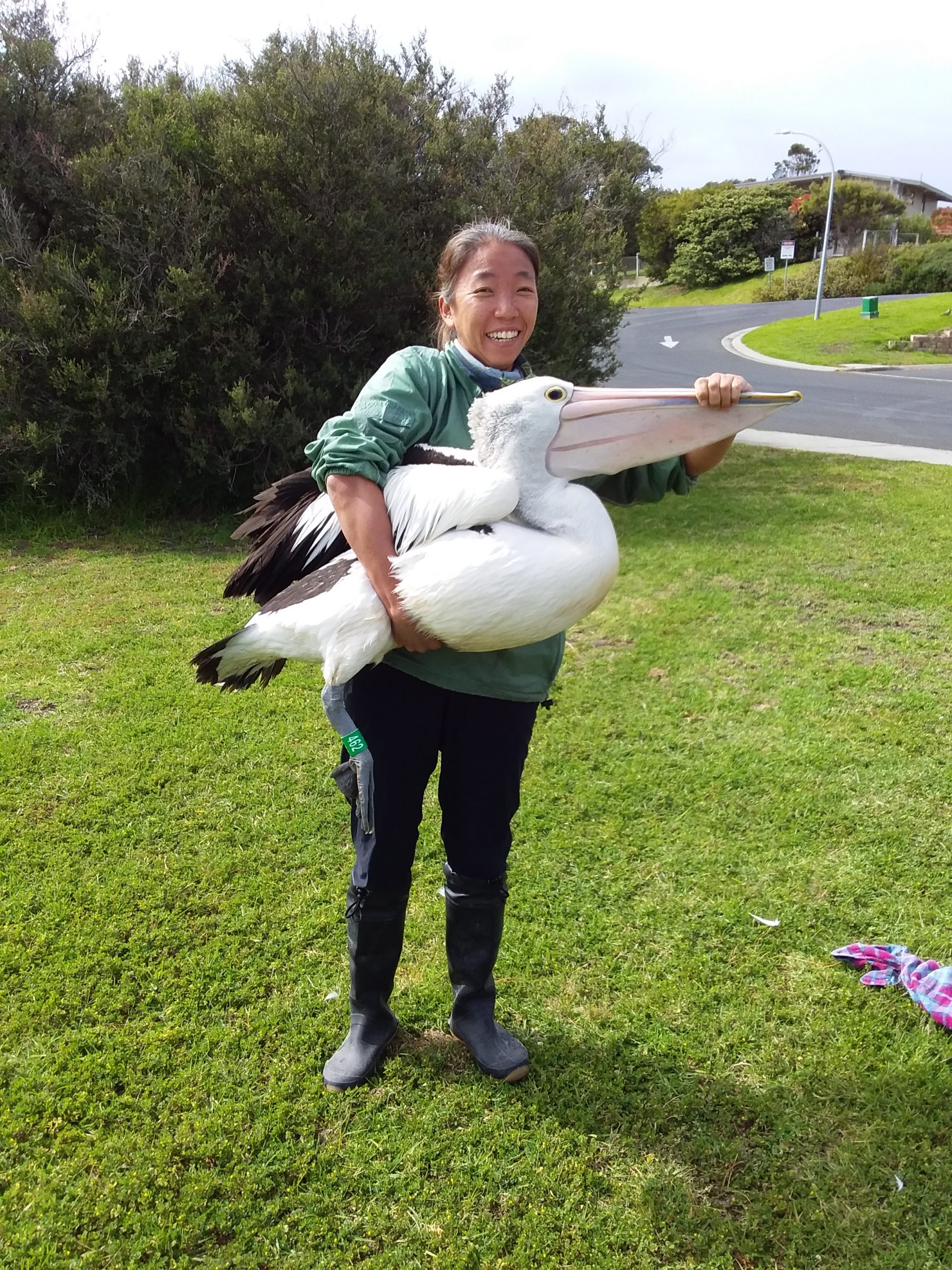
Katherine with an Australian Pelican she just banded on Philip Island. © Gary Matthews
EAAFP: Hi Katherine, can you tell us about yourself and your background, please?
My career in conservation started with being an Assistant Reserve Officer with WWF-HK at Mai Po Nature Reserve in 2005. During the twelve years at Mai Po, I spent most of the time working in the research and monitoring team and then moved to take charge of the habitat management team in the last three years. This is where most of my practical wetland site management experience came from.
I was also lucky to join bird ringing at the Mai Po reedbed as part of my job training since 2007. And gratefully in 2008, the late Dr. Lew Young, Mai Po Manager back then, sent me to join the 3-week North-west Australia Wader and Tern Expedition. That’s where I start connected with migratory shorebirds.
I am now a freelance shorebird and wetland conservationist of a one-man company I have set up called “Kalidris Ecology”. Mostly migratory along coastal China nowadays and usually winters back in my birthplace, Hong Kong, where I take part in coordinating the Hong Kong Waterbirds Ringing Group at Mai Po. Occasionally migrate to other parts of the EAAF.
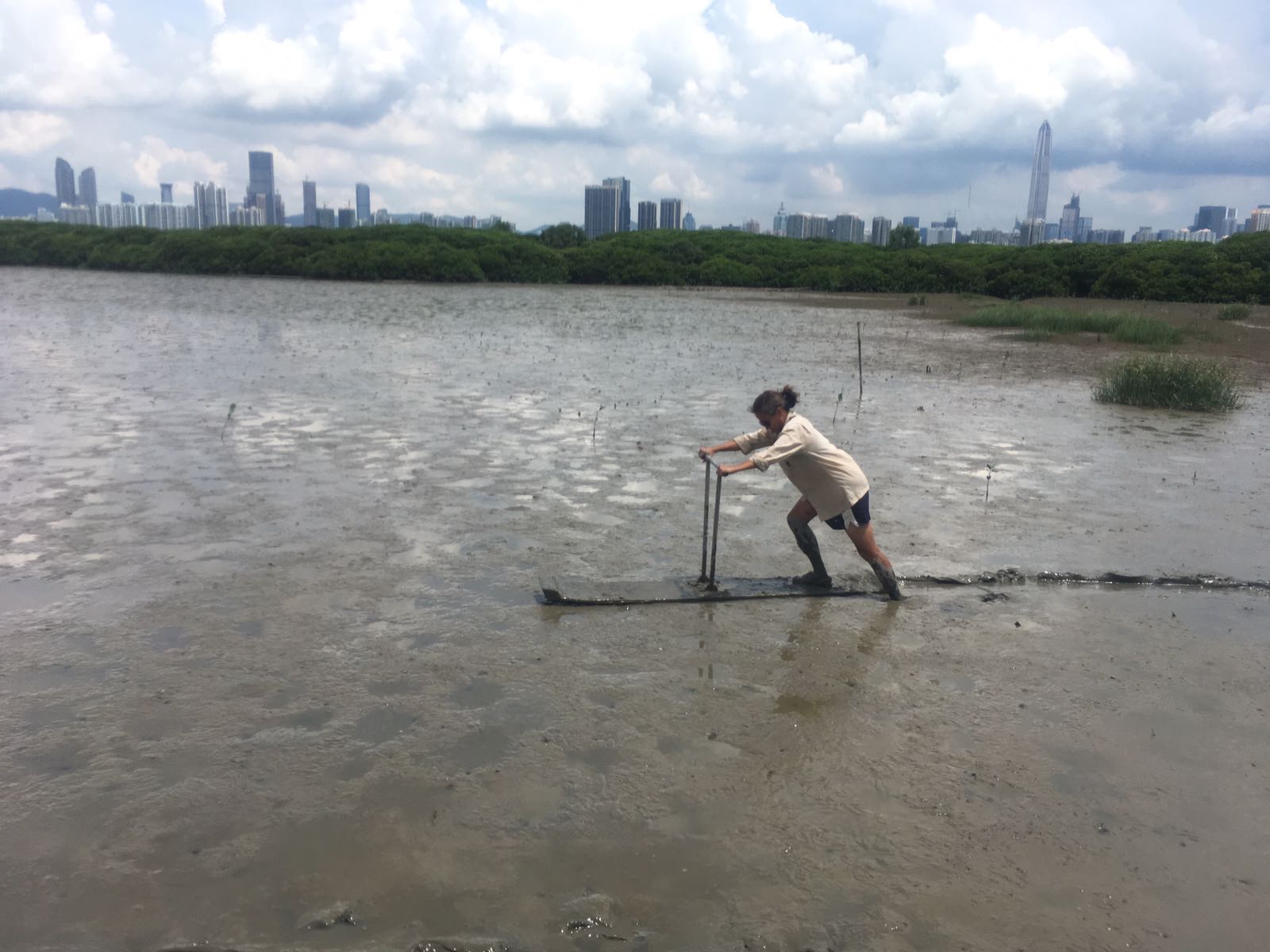
Riding a mud-scooter to work on the mudflat at Mai Po Nature Reserve, Hong Kong. © Roger Lee
EAAFP: What motivated you to become a Field Ecologist?
I love watching wildlife documentaries since I was a kid and my parents often took me and my elder brother to country parks during the weekend when we were young. That was the origin of my passion for nature and why I chose to study Environmental Life Science at the University of Hong Kong. I know I am not a 9 to 5 office hour person, hence I kept looking for jobs which involve working in the field in nature since I graduated.
EAAFP: We heard that you quit your previous job and started a “migration journey” with the birds, please tell us more about your experiences in this regard.
“I want to travel around the world” was a good “excuse” for a break from my twelve-year full-time job. The itinerary of my “big year” easily filled up from the beginning in Nov-2017 given the connections I have made with people working on shorebirds in the past.
On southward migration, I flew to King Island in Tasmania to cannon net Ruddy Turnstones. Then spent 30 memorable days driving and birding around New Zealand before flying back to Australia for a road trip from Melbourne to Broome to join the NWA Expedition for my 10th time.
In spring, I migrated to Chongming Dongtan for shorebird ringing and spent a week scanning colour bands on Red Knots in Bohai Bay with the Global Flyway Network team.
I have also been a vagrant to Delaware Bay in the US, the Wadden Sea in the Netherlands and the Wash in the UK that year. All of these I have only visited a very limited area but have already been truly amazed.
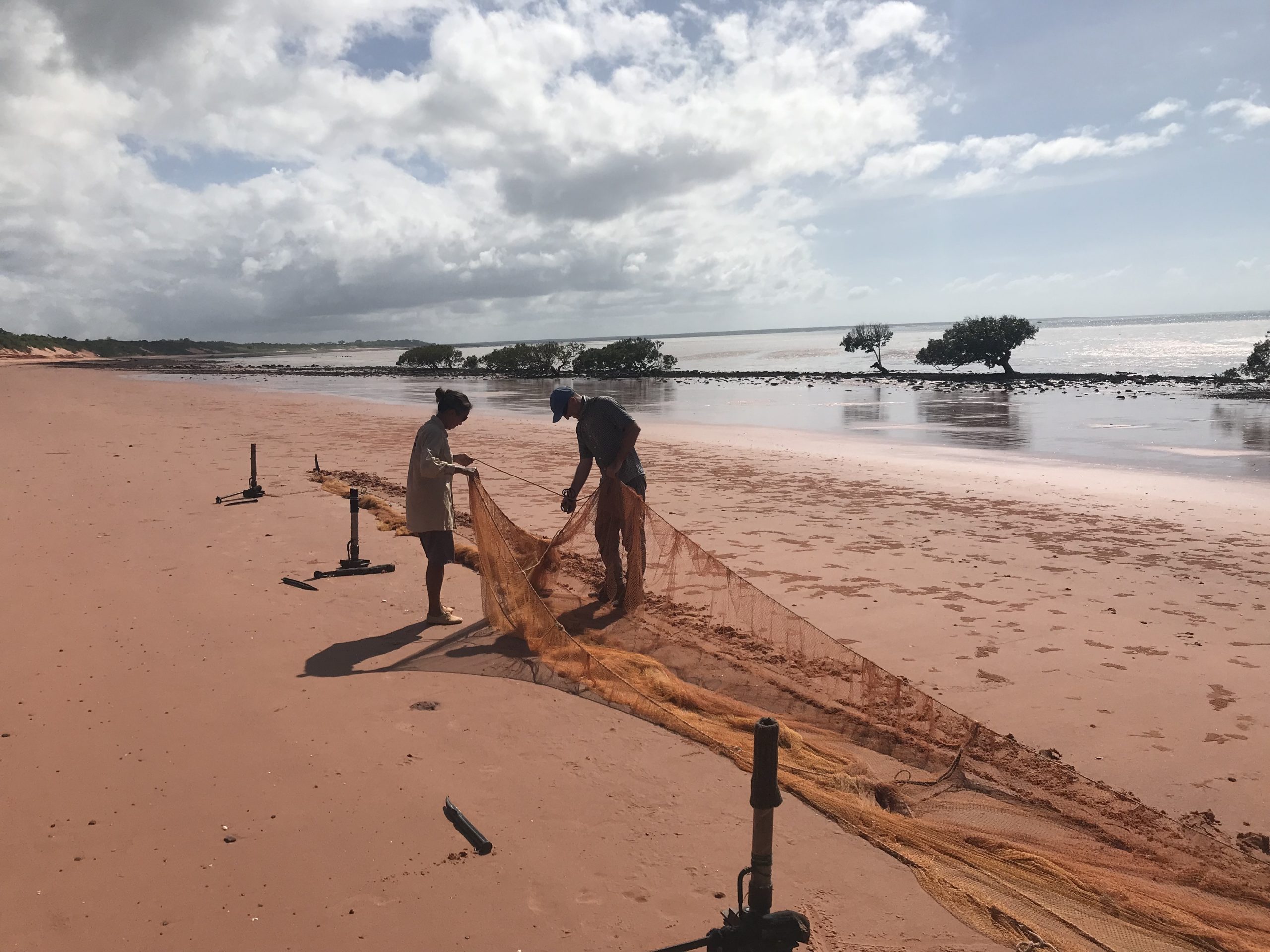
Setting a cannon net to catch shorebirds during NW Australia Expedition. © Bingrun Zhu
EAAFP: In your experiences of following shorebird migration, what is the most fascinating aspect of bird migration?
Travel expenses have always been my biggest spend annually (before COVID-19). I am definitely envy with migratory shorebirds as they don’t need to buy flight tickets. For many times I was excited to encounter shorebird individuals which I have met before, either from ringing or resighting leg-flags thousands of kilometer away in other parts of the flyway.
EAAFP: What kind of projects are you currently doing?
Most of the time I base in Chongming, Shanghai to help with breeding waterbirds monitoring at Shanghai Chongming Dongtan National Nature Reserve. I am also involved with their habitat management work planning.
Another project I am involved with in the past two springs was the Global Flyway Network’s study on Red Knots in Bohai Bay. Occasionally I help with waterbird surveys in Jiangsu (Lianyungang, Tiaozini and Yangkou) with the SBS in China team and help other research projects to carry out bird ringing and fitting trackers on shorebirds.
But obviously, it won’t be all fieldwork! At home office, I write management and monitoring plans for reserve and wetland parks, and develop training materials on wetland management. I also voluntarily help to collect leg-flags sighting records from birders in China and convey them to the corresponding ringing teams in the EAAF, which does take up much time but it is really interesting to see where the birds are migrating to!
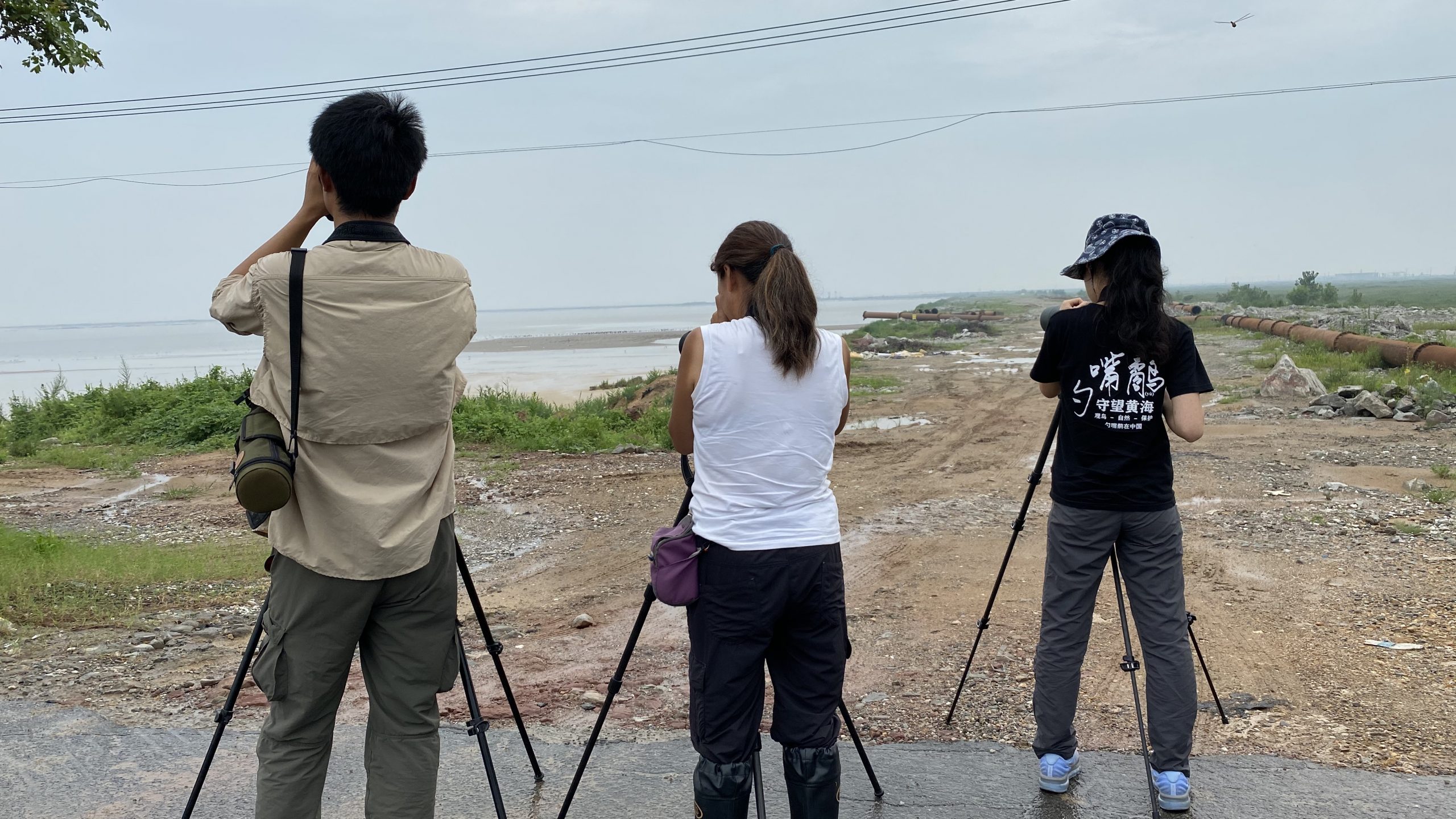
Katherine and SBS in China team counting shorebirds in Lianyungang, Jiangsu, China. ©Yongqiang Han
EAAFP: You have a lot of experience in site management, fieldwork and particularly in bird ringing projects recently. Do you have any memorable moments to share about the fieldwork and the bird ringing projects?
The craziest fieldwork schedule I have ever been involved with must be the annual field trip to Jiangsu with the Spoon-billed Sandpiper Task Force team. I am thankful that David Melville invited me to join the team since autumn 2016. The majority of the team is from BTO, RSPB and WWT from the UK and we team up with Nanjing Normal University locally.
We usually have a lot to do in 10-day fieldwork. During the day we carry out surveys to estimate Spoon-billed Sandpiper population and at the same time investigate potential locations to catch Spoon-billed Sandpiper for fitting satellite transmitters on. At night we set up mist nets until dawn and ring hundreds of shorebirds with a handful of Spoonies. We had four consecutive nights of mist netting in autumn 2018 with only a couple of hours resting and dining everyday. But the result was fruitful with 15 Spoonies caught and four transmitters deployed to help understand the migration of this critically endangered species.
EAAFP: As a female working in the field dominated by males, how do you see females working in this field?
I don’t feel we are the minority at all. There are certainly no lack of smart women working in this field and they all shine! I have met women physically fit to walk on very soft mudflats and men with very fine hands to tie tiny knots on satellite transmitters. I think it is the passion, character and skill of a person which matters, not gender.
EAAFP: With your experiences in site management, and through your “migration journey”, what do you view are the key elements to effectively protecting important sites?
In my opinion, the key is “knowing how to” and then “take action accordingly and persistently”. First of all, we need good scientific data to help us understand how the birds (and people) are using the site and what are the major influences and threats. Then we can plan and take specific conservation/management actions to retain or enhance the site at its best stage. Followed by monitoring to evaluate the results and refining the actions. Wetland is a dynamic ecosystem so it is a continual investment to keep planning, managing, monitoring and refining.
EAAFP: What message would you like to tell our audience about studying bird migration and conserving the migratory waterbirds in the EAA Flyway?
We don’t all need to be great conservationists doing big things to save the world, each of us can do our small parts at the best we can to contribute. And I guess more importantly is to find something that you enjoy doing, seize every moment.
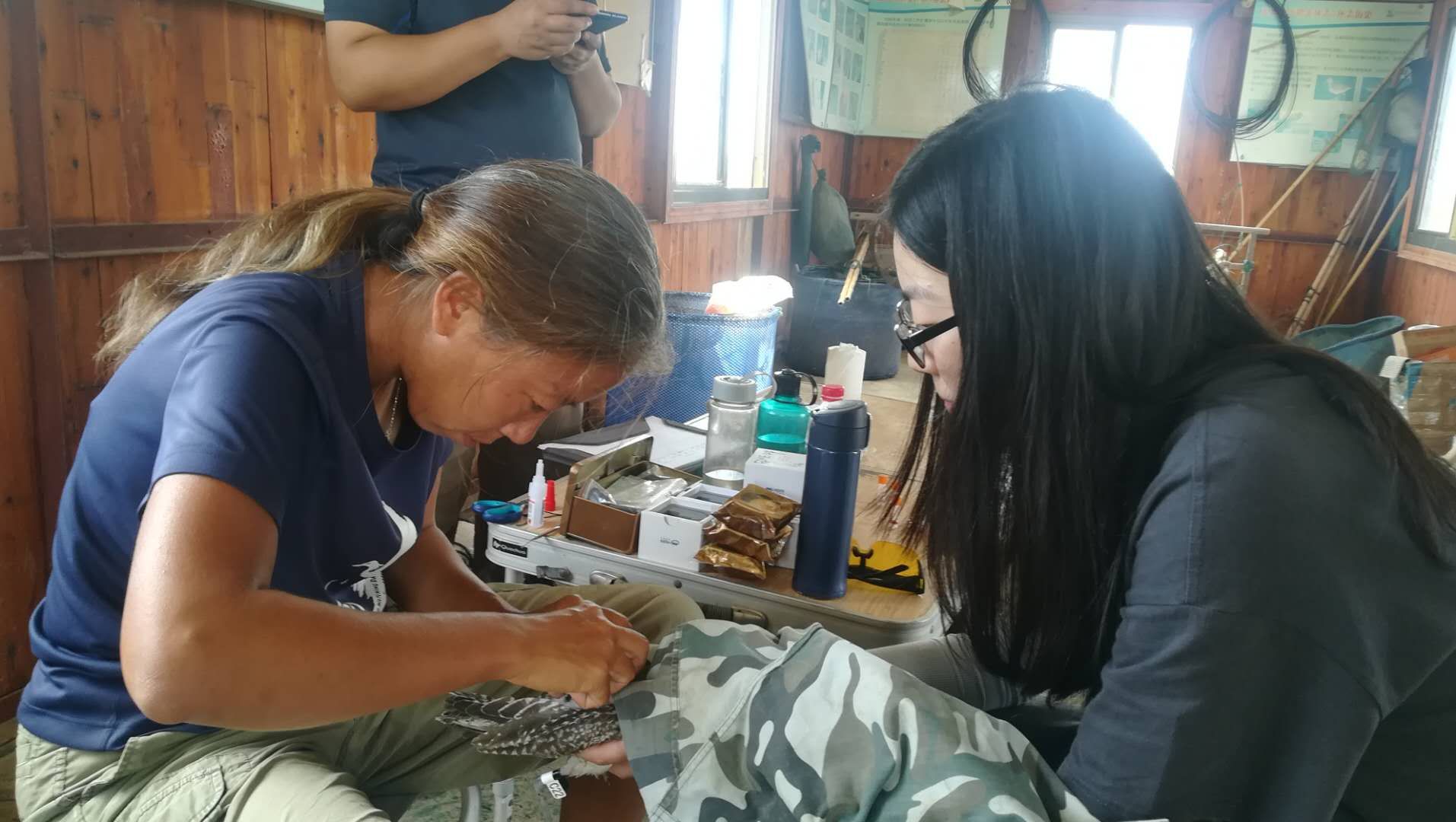
Fitting satellite transmitter on a Whimbrel at Chongming Dongtan Nature Reserve. © Zhijun Ma





